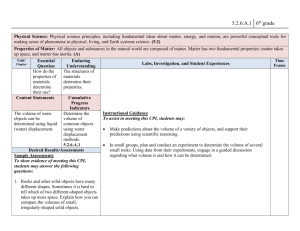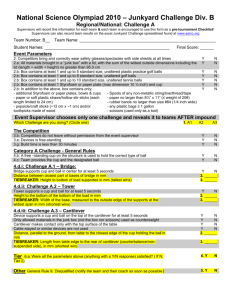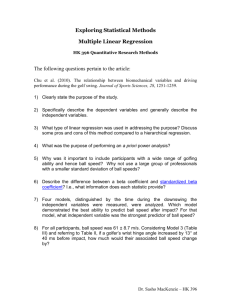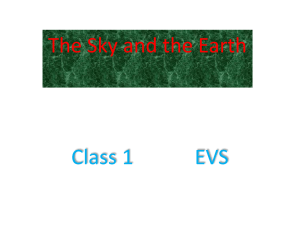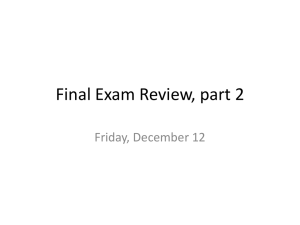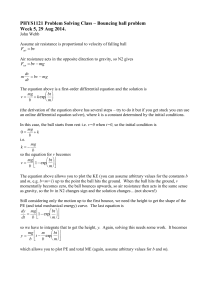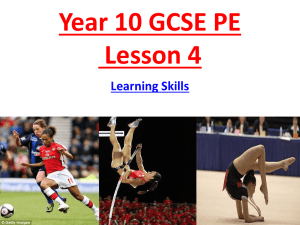Week10 - Wylie Breckenridge
advertisement
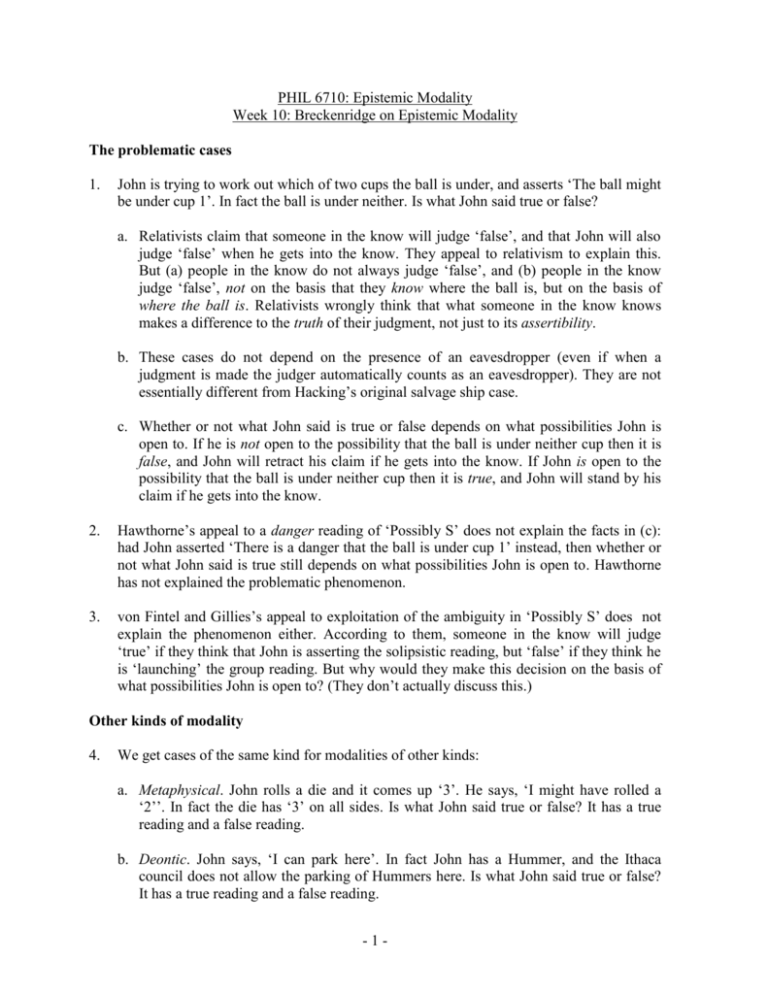
PHIL 6710: Epistemic Modality
Week 10: Breckenridge on Epistemic Modality
The problematic cases
1.
John is trying to work out which of two cups the ball is under, and asserts ‘The ball might
be under cup 1’. In fact the ball is under neither. Is what John said true or false?
a. Relativists claim that someone in the know will judge ‘false’, and that John will also
judge ‘false’ when he gets into the know. They appeal to relativism to explain this.
But (a) people in the know do not always judge ‘false’, and (b) people in the know
judge ‘false’, not on the basis that they know where the ball is, but on the basis of
where the ball is. Relativists wrongly think that what someone in the know knows
makes a difference to the truth of their judgment, not just to its assertibility.
b. These cases do not depend on the presence of an eavesdropper (even if when a
judgment is made the judger automatically counts as an eavesdropper). They are not
essentially different from Hacking’s original salvage ship case.
c. Whether or not what John said is true or false depends on what possibilities John is
open to. If he is not open to the possibility that the ball is under neither cup then it is
false, and John will retract his claim if he gets into the know. If John is open to the
possibility that the ball is under neither cup then it is true, and John will stand by his
claim if he gets into the know.
2.
Hawthorne’s appeal to a danger reading of ‘Possibly S’ does not explain the facts in (c):
had John asserted ‘There is a danger that the ball is under cup 1’ instead, then whether or
not what John said is true still depends on what possibilities John is open to. Hawthorne
has not explained the problematic phenomenon.
3.
von Fintel and Gillies’s appeal to exploitation of the ambiguity in ‘Possibly S’ does not
explain the phenomenon either. According to them, someone in the know will judge
‘true’ if they think that John is asserting the solipsistic reading, but ‘false’ if they think he
is ‘launching’ the group reading. But why would they make this decision on the basis of
what possibilities John is open to? (They don’t actually discuss this.)
Other kinds of modality
4.
We get cases of the same kind for modalities of other kinds:
a. Metaphysical. John rolls a die and it comes up ‘3’. He says, ‘I might have rolled a
‘2’’. In fact the die has ‘3’ on all sides. Is what John said true or false? It has a true
reading and a false reading.
b. Deontic. John says, ‘I can park here’. In fact John has a Hummer, and the Ithaca
council does not allow the parking of Hummers here. Is what John said true or false?
It has a true reading and a false reading.
-1-
c. Bouletic. John says to his kids, ‘You’re allowed to watch television tonight’ (it’s
Friday). In fact, his kids skipped school that day to go to the mall. Is what John said
true or false? It has a true reading and a false reading.
5.
We’d like a unified account of these cases. Stepping back and looking at modality in
general might help with the epistemic case.
6.
Of the metaphysical case the following seems natural to say: the true reading is one that
allows for worlds that deviate from actuality a fair way; the false reading is one that does
not allow for as much deviation.
A proposal
7.
I propose:
a. ‘Possibly S’ in a context C expresses, for some conversational background f
determined by C, a proposition that is true at a world w iff the prejacent is true in
some f(w) world that is close to w. (What counts as close will vary from context to
context.)
Or maybe put it this way:
b. ‘Possibly S’ in a context C expresses, for some conversational background f and
distance d determined by C, a proposition that is true at a world w iff the prejacent is
true in some f(w) world that is within d of w. (The speaker need not have a particular d
in mind. She might also be existentially quantifying over a distance variable.)
For ‘Necessarily S’, just replace ‘some’ by ‘every’.
8.
Lewis appeals to closeness to give an account of counterfactual conditionals:
a. ‘If it had snowed today then I would have gone skiing’ expresses (in my mouth) a
proposition that is true iff every closest world in which it snowed today is a world in
which I went skiing.
As for ‘might’:
b. ‘If it had snowed today then I might have gone skiing’ expresses (in my mouth) a
proposition that is true iff some closest world in which it snowed today is a world in
which I went skiing.
Now if we drop the conditional part then we start to get the account that I am proposing:
c. ‘I might have gone skiing’ expresses (in my mouth) a proposition that is true iff some
closest world is a world in which I went skiing.
-2-
Some explanations
9.
How does the proposed account handle the two cup case?
a. Suppose John thinks that the ball is under one of the two cups, and that we don’t have
to go very far to get to a world in which the ball is under cup 1 (possibly nowhere at
all) – no more than d. When he says, ‘It might be under cup 1’, he is claiming that
there is a world within d of the actual world in which the ball is under cup 1. When he
learns that the ball is under neither cup he learns that this is false – there is no such
world within d of the actual world (the closest one is further than d away).
b. But if John is open to the possibility that the ball is under neither cup, then when he
says, ‘It might be under cup 1’, he is claiming is that there is a world within some
bigger distance d+ of the actual world in which the ball is under cup 1, and this is true.
c. What possibilities John is open to corresponds with (or determines) what degree of
closeness John is expressing.
10. How does the proposed account handle Hacking’s salvage ship case?
a. When the mate says, ‘The wreckage might be here’, he is not simply saying that there
is a world in which (a) what he knows is true, and (b) the wreckage is here – that
much is true. Rather, he is saying that there is a close such world. And this is false,
because worlds in which the wreckage is here are worlds in which the log is different,
and these are too far away to count as close (he is fixing the content of the log).
b. There is no need to modify the standard account to appeal to what people can come to
know, and thus no need to draw a problematic boundary between what counts as a
method for coming to know and what does not (we discussed this is a previous week).
Comparison with Kratzer
11. How does the proposed account compare with Kratzer’s modified account? Here is what
she says:
a. ‘Possibly S’ relative to a context C expresses, for some modal base f and ordering
source g determined by C, a proposition that is true at a world w iff the prejacent is
true in some f(w) world that is closest to the g-ideal.
b. There are differences:
i. For Kratzer, at a world w we are interested in worlds that are close to the g(w)ideal; for me, at a world w we are interested in worlds that are close to w. In some
cases these are different sets of worlds. E.g. deontic cases.
ii. For Kratzer, sometimes the conversational background sets the ordering source (it
does whenever the conversational background is normative, as in deontic cases).
-3-
For me, the conversational background never sets the ordering source – it is
determined by the way the world is.
12. Does the proposed account solve the problems that Kratzer’s modified account was trying
to solve? I don’t think so:
a. First problem. When f(w) is inconsistent (e.g. a father has inconsistent desires) then
the proposition expressed by ‘Possibly S’ is automatically false at w, and the
proposition expressed by ‘Necessarily S’ is automatically true at w. The same goes for
my account.
b. Second problem. ‘If a murder occurs then the murderer must {go to jail, be
knighted}’. Kratzer splits this into a modal base part and an ordering source part, and
then appeals to closeness. I don’t have that available to me, and so I still get this
problem.
c. Third problem. Graded possibility. It might seem that we can deal with this if we have
closeness: something is slightly possible just in case there is a world some distance
away in which it is the case. But: if ‘The ball might be under cup 1’ is false then so is
‘There is a slight possibility that the ball is under cup 1’.
13. Maybe we could combine the two proposals.
Other problems
14. How does the account fair with other problems for the standard account?
a. Necessary falsehoods. No change.
b. Evidential component to ‘must’. Nate?
c. And/or. No change.
-4-
